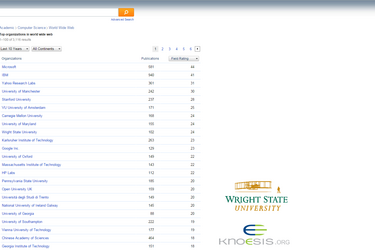Outsized Publication Impact of Kno.e.sis and Some of Its Students
December 14, 2015

December 14, 2015
The World Wide Web (WWW or the Web) has been one of the most important high-tech areas. Today’s biggest corporations such as Google and Facebook are all poised in unique positions because they make the Web more useful and provide new functions. In this important area, did you know our own Wright State University ranks among the top 10 in the World based on 10-year research impact?
On Microsoft Academic Search (MAS), a service developed by Microsoft which continuously analyzes publications and their impact, Wright State University shares the seventh position on the list of “top organizations
Finding the right college means finding the right fit. See all that the College of Engineering and Computer Science has to offer by visiting campus.